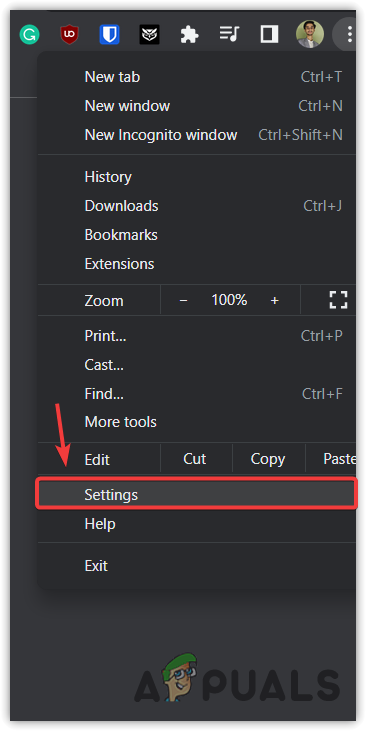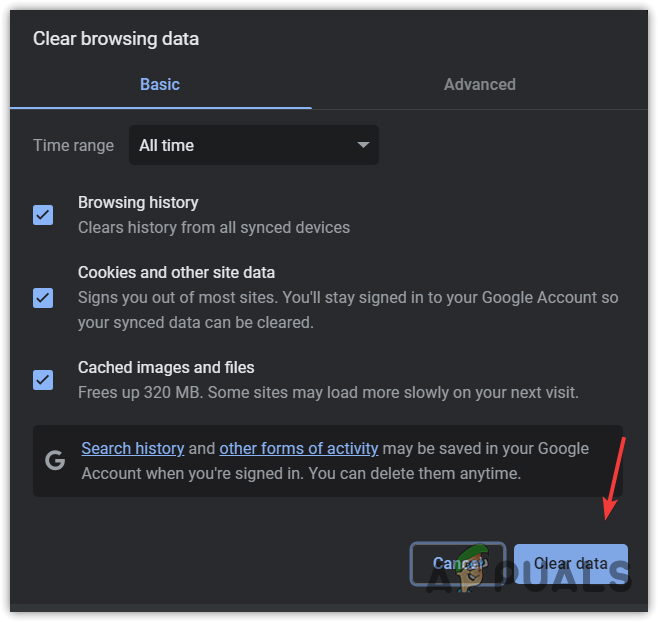Fix: Computer Freezes When Watching Videos
Windows may freeze while playing YouTube videos or standard videos through media players. This issue can be triggered by numerous factors. Assuming your system meets the minimum requirements, your PC should not freeze while playing videos on any platform. A system equipped with 4GB of RAM and a 500MB integrated GPU ought to be sufficient to run videos smoothly.
If you are using Chrome, we wouldn’t be surprised, as we all know Chrome uses a lot of RAM. Despite the fact that Chrome consumes a significant amount of RAM, it remains one of the most popular and favored browsers among users.
To prevent Chrome or any other browser from freezing, we need to apply some settings that are intended to reduce RAM usage, which should automatically fix this issue.
1. Disable Hardware Acceleration
You will find the Hardware acceleration feature on every browser. When this feature is enabled, it offloads tasks to another hardware component, such as GPU. So the browser can run more smoothly and render more web pages.
However, using the hardware acceleration feature may also lead to crashes and freezes, as it requires a significant amount of RAM. Therefore, if you are utilizing this feature, consider disabling it by following these steps.
If you are using a browser other than Chrome, the following steps might vary.
- Click the three dots from the top right corner and select Settings to navigate.

- Go to System from the left and turn off Use hardware acceleration when available.
- Click Relaunch to restart the Chrome browser.

- Once done, play any Youtube video to check if the problem persists.
2. Remove Unnecessary Extensions
Using unnecessary extensions is also among the leading causes. It is because Chrome runs the extensions in the background even if you are not using them, which also causes a significant amount of RAM consumption, leading to freezing while watching videos.
To remove the unnecessary extensions, follow the steps:
- Simply click the extension icon on the top right and select Manage Extensions.

- Here remove the unnecessary extension to reduce the RAM usage.

- Once done, check if the problem is resolved.
3. Clear Browser Cache
Your browser can also freeze due to corrupted cache data. Browsers create cache files to store frequently visited sites, cookies, and other data such as files and images.
This helps reduce the loading time as the browser doesn’t need to send the request to the server for the data as it can fetch it from the cache files. Therefore, if there is a problem with the cache files, it could freeze the browser and videos. So try clearing the browser cache with the help of the following steps.
If you are not using the Chrome browser, the following steps might be different.
- Click the three dots, and select Settings.
- Once you are in the settings, go to Privacy and Security from the left pane.

- Then, click Clear browsing data, and make sure All time is selected from the time range menu.

- Then, click Clear data. This will remove all the site data; hence, you will need to log in to the websites that require user authentication.

4. Install or Update the Graphics driver
This step is necessary for those users who don’t have a dedicated GPU but have an integrated GPU. Some users are unaware of the iGPU. It is an integrated GPU that is built directly into the CPU. It uses the system’s memory as a VRAM.
The amount of VRAM in an iGPU depends on the overall RAM installed on your PC. Therefore, if you have an iGPU but are not utilizing it, you may experience crashes or freezes while watching YouTube or other videos.
A video also requires rendering, which can either be performed by a dedicated GPU or an iGPU. So, if you don’t have a dedicated GPU but have an iGPU, you should ensure that its drivers are properly installed. Running videos on a system without an iGPU or a discrete GPU can cause the videos to freeze or even crash. Therefore, make sure to install drivers if you have an iGPU. To do so, follow these steps:
- Right-click the Start Menu and select Device Manager to open it.

- Expand the Display adapters, and right-click on your graphics driver.
- If you see a Microsoft Display Adapter, that means you need to install the graphics driver. If you see the Intel HD graphics, you can try updating the graphics driver. First, let’s see how you can update the Intel HD graphics driver.
- Simply right-click on an intel graphics driver, and select Update driver.

- Then, select Search automatically for drivers.

- If you see a message The best drivers for your device are already installed, either move on to the next method or check for the latest driver on the official intel site.
- To install the latest Intel HD graphics driver, simply go to the official Intel site using the link.
- Download the Intel Driver and Support Assistant utility.

- Once it is downloaded, simply install the utility and check for the drivers.
- Once the utility has s detected all the drivers, install them.
- Restart your computer and see if the system is still freezing when watching videos.
5. Enable XMP if possible
XMP or Extreme Memory Profiles allows users to run the RAM at the intended speed, which means you can use the maximum performance of your RAM. If your RAM and motherboard support the XMP feature, you should definitely enable the XMP. This will overclock your RAM, which helps run the browsers smoothly, especially the browsers which consume high RAM usage like Chrome. To use the XMP, follow the steps:
- To enable the XMP, you will need to access the motherboard bios settings. For that, turn off your system completely.
- Then turn it on back.
- Once you see the manufacturer’s logo, start pressing the key that takes you to the motherboard bios settings. The following keys are usually used to take into motherboard bios settings.
- Once you are in the motherboard bios settings, go to Overclock Settings and enable the XMP by selecting Profile 1.

- Now change the DRAM Frequency to the maximum speed that your RAM and other motherboard component support. For instance, if you have RAM with a maximum speed of 3600 MHz speed, you can safely select 3600 MHz.

- Once done, save the settings, and exit the bios settings.
- Then, verify if the freezing issue is resolved.
7. Run in a Clean Boot
A clean boot is a process that prevents unnecessary services and third-party applications from running at the starup. Usually, this troubleshooting process is used to prevent interference from third-party applications.
However, as we know, Chrome consumes a significant amount of Ram usage, so it is recommended to make sure there are no background applications consuming of RAM usage, especially if they are idle.
In this case, we can try performing a clean boot which will prevent the irrelevant applications from consuming memory usage. This will help run Chrome smoothly.
To perform a clean boot:
- Press the key combination of Win + R to open Run Program.

- Type the command msconfig and hit Enter to open the System Configuration Window.

- Select the Selective Startup and navigate to the Services tab.
- Here tick Hide all Microsoft services and click Disable all.

- Once you disabled all the services, go to the Startup tab.
- Click Open Task Manager.

- Then, right-click the applications that you think are irrelevant, then click Disable.
 Once done, restart your computer to perform a clean boot.
Once done, restart your computer to perform a clean boot.- Then, verify if the problem is resolved.
Still not resolved?
It is not necessary to use a browser that keeps freezing while watching a video. There are many browsers available; you can choose the best one for yourself that does not consume high computing resources. We have a complete guide on browsers for low-end devices. You can visit the guide to select the best one to prevent this issue again.
Windows Freeze while Watching Videos- FAQs
There are different causes for this issue. Usually, this problem occurs due to enabled hardware acceleration features, running unnecessary extensions, and having corrupted cache data. These are some of the leading causes that could potentially cause this issue.
The solution to this issue depends on the situation. If you are using the hardware acceleration feature, try disabling it. If the problem persists, try removing unnecessary extensions and also clear the browser data.
 Reviewed by
Reviewed by 




